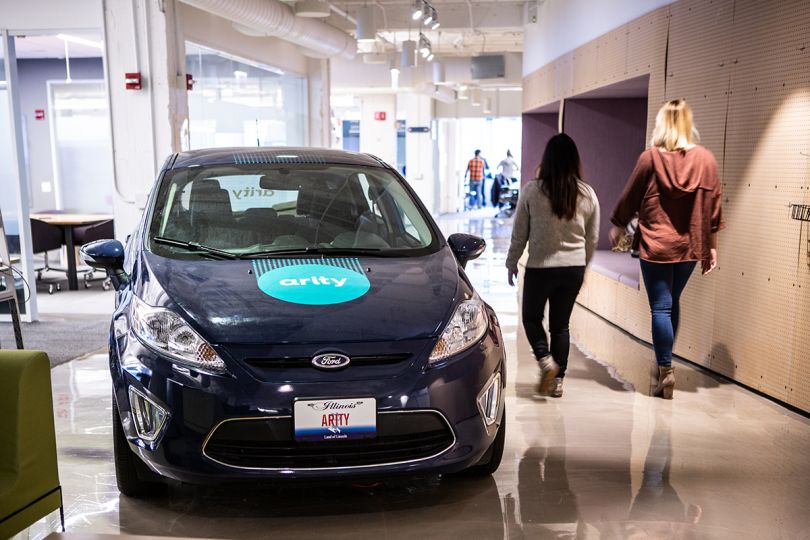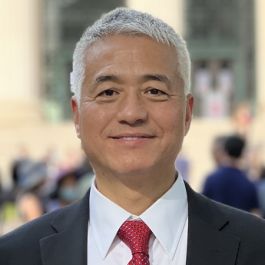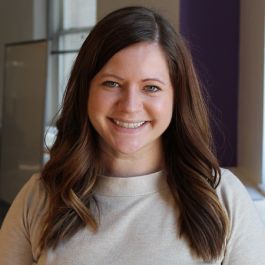Even with decades of industry experience, Min Shao finds himself regularly learning new things as VP of analytics at Arity.
“I’ve been in the data and data analytics area for almost 30 years. I thought I knew a lot already,” Shao said. “But every day I’m learning about how insurance works and how we can use the data in the right way to solve insurance- and transportation-related problems.”
Shao leads a team of around 50 data scientists and analysts who look to further Arity’s mission — one of ambitious scope.
“We want to make transportation smarter, safer and more useful for everyone. To do this, we collect and analyze lots and lots of driving data to understand how people move,” Shao said. “We use the insights we get from the analysis of the data to help provide better experiences on and off the road — for the drivers as well as communities and businesses.”
By bringing together different types of incoming data, Arity aims to unlock momentous and beneficial insights for auto insurance companies and drivers. According to Director of Actuarial and Data Governance Megan Klein, it’s a potent equation.
“We can take the driving data and combine it with insurance outcome data. By combining those, we not only understand how people move, but how the way that they're moving can affect their risk profile,” Klein said. “That gets to the part of the mission statement where we're helping make transportation smarter, safer and more useful. When people understand how they're moving, and how that might impact their risk of potentially getting into an accident, we can actually coach and engage people to leverage this data and make the road safer.”
The scale of that data? Significant, to say the least. Leading a team of engineers who help ensure Arity’s platform is up to date and data pipelines are operating smoothly, Senior Engineering Manager Rahul Chandrawanshi compared it to “a sea of data coming into our system.”
“Data keeps growing as we onboard more customers, get data from different sources and help more drivers,” said Chandrawanshi, who joined Arity five years ago directly from its founding company, The Allstate Corporation.
All of that data requires more than just technology to manage it, and Arity has the people component down. If a fresh tech stack and platform provides the engine to drive toward Arity’s goals, then it’s thoughtful teamwork between different departments that helps steer through the complexity and nuances of their roles in what Shao called “one of the most collaborative type of companies I’ve worked at.”
“Megan’s data governance and actuarial and rating services team, and the operational excellence team, help a lot with defining to figure out things like: What data we should be ingesting and what data we should not be ingesting? How do we protect the privacy of our customers? How do we meet the regulatory requirements?” Shao said.
Below, Klein, Shao and Chandrawanshi shared why their roles translate into stimulating technical challenges and how, when guided by Arity’s mission, they’re able to make a difference.

Let’s talk about delivering safe experiences. How does that come through in the work?
Director of Data Governance and Actuarial and Rating Services Megan Klein: We have our own mobile app that we provide, called Routely, as well as software that can be embedded within an insurance company’s mobile app. By comparing telematics driving behavior data with claims information, we’re able to create insights that can help insurance companies better understand driver behaviors and change or tune the rates that they charge based on these behaviors. This provides an incentive to drivers, who now understand that they should receive a lower rate if, for example, they never touch their cell phone when driving. That just makes them safer drivers.
VP of Analytics Min Shao: We embed our crash-detection machine-learning model in our software development kit. If you installed our partners’ apps with our SDK embedded, the model will automatically detect if there is a crash that just happened in real time. Then it automatically sends out alerting messages to emergency contacts and service providers, as well as your family and friends. That’s another example of helping the drivers’ experiences be safer and more useful.
Helping Make Insurance Premiums Fair
What is the scale of the data that your teams respectively work with?
Senior Engineering Manager Rahul Chandrawanshi: The scale of data is enormous. We process close to 60 million trips a day. We have collected hundreds of billions of miles of driving data and collect anywhere close to 700 million miles of driving data on any given day. The data comes in RAW formats. We ingest the data, process the data, normalize the data, anonymize the data and make it usable for customers. This process happens within our pipelines, where we use a bunch of different tools and technologies to make it all happen in near-real time.
“The scale of data is enormous. We process anywhere close to 60 million trips a day.”
Klein: It’s that scale of the data combined with other sources of data, too — which includes, as mentioned, a lot of insurance claims outcome information. By having that large scale of driving behavior that is managed very well by our engineering team, and combining that with insurance information, it’s this scale that no other company really has access to. We can create truly meaningful insights.
How do you ingest the data that you work with?
Chandrawanshi: We get data from mobile devices, telematics devices and sometimes from the car itself. Our infrastructure is built on the cloud. We make sure that all the data which is coming in is authorized from the organizations which we trust and are already registered with Arity.
We use a lot of cutting-edge tools and technologies within the cloud infrastructure to make sure that we are able to handle that much data. Because we collect a lot of traffic data, there are peaks and valleys of data coming in during any 24-hour period. We have auto-scaling enabled on our end points, which allows us to expand and contract based on the amount of data coming in.
When data hits our end points, we do validation and access authorization. After that, we use different streaming tools, like Kafka, Flink, NiFi, etc. and from there it gets persisted into our operational and analytics data stores, which is a group of databases like Cassandra, Postgres, EMR, etc. Most of our architecture is event-driven architecture, meaning we have the data flowing through our pipelines which is being used by different products as per the business requirements.
Shao: Pretty much everything that you can think of, we’ve probably tried it. We use a diverse set of tools; there aren’t really specific requirements that you have to use certain tools. That gives analysts and data scientists the opportunity to experiment and use the best tools they know so that they feel most comfortable with their work.
“Pretty much everything that you can think of, we probably have tried it. We use a diverse set of tools.”

What’s an exciting project that you’re working on right now? What’s the impact of that project and how does it benefit Arity customers?
Shao: We're looking at how we can actually deploy machine- learning models on the edge without having to make software releases. With that, we can change the models without actually having the user update their apps. That’s very exciting because it gives us a lot of flexibility for improving the model performance quickly.
Chandrawanshi: We’re moving toward managed services where our technology partners will be taking care of the infrastructure maintenance, giving more time to the Arity engineers to work on building code and products. It reduces the operational overhead and increases availability for our end clients by making the system more robust and more performant.
Klein: In insurance, there are times where driver behavior information is only partially available. What is the impact of having information on only a subset of drivers or vehicles? Our actuarial team is analyzing questions like these to support recommendations to insurance companies to help them address different data scenarios that will allow them to best understand the risk of their policies, as well as meet customers where they are and where the data is.
Lastly, what impact can new hires have at Arity?
Chandrawanshi: It’s not just the tools and technologies we use that make it exciting for software engineers. We encourage people to pursue what interests them. We encourage rotation within teams so that they can expand their horizons and work on solving new problems, learning new technologies and building new products.
Shao: As a data scientist or an analyst, there’s no better place than Arity. There are lots of interesting problems to solve. There’s really big data for you to look at. There’s a modern technology stack that you can use and learn and a great group of people to work with. You see the impact on our business, and more importantly, on our customers and our users immediately.







